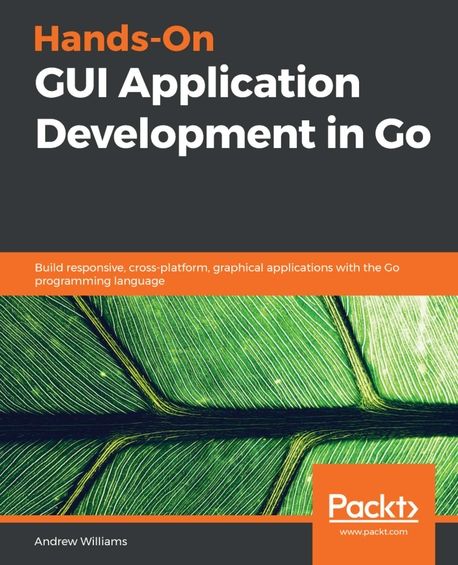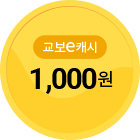Hands-On GUI Application Development in Go
2019년 04월 30일 출간
- eBook 상품 정보
- 파일 정보 PDF (16.83MB)
- ISBN 9781789131161
- 지원기기 교보eBook App, PC e서재, 리더기, 웹뷰어
-
교보eBook App
듣기(TTS) 불가능
TTS 란?텍스트를 음성으로 읽어주는 기술입니다.
- 전자책의 편집 상태에 따라 본문의 흐름과 다르게 텍스트를 읽을 수 있습니다.
- 이미지 형태로 제작된 전자책 (예 : ZIP 파일)은 TTS 기능을 지원하지 않습니다.
PDF 필기가능 (Android, iOS)

쿠폰적용가 21,600원
10% 할인 | 5%P 적립이 상품은 배송되지 않는 디지털 상품이며,
교보eBook앱이나 웹뷰어에서 바로 이용가능합니다.
카드&결제 혜택
- 5만원 이상 구매 시 추가 2,000P
- 3만원 이상 구매 시, 등급별 2~4% 추가 최대 416P
- 리뷰 작성 시, e교환권 추가 최대 200원
작품소개
이 상품이 속한 분야
Go is often compared to C++ when it comes to low-level programming and implementations that require faster processing, such as Graphical User Interfaces (GUIs). In fact, many claim that Go is superior to C++ in terms of its concurrency and ease of use. Most graphical application toolkits, though, are still written using C or C++, and so they don't enjoy the benefits of using a modern programming language such as Go.
This guide to programming GUIs with Go 1.11 explores the various toolkits available, including UI, Walk, Shiny, and Fyne. The book compares the vision behind each project to help you pick the right approach for your project. Each framework is described in detail, outlining how you can build performant applications that users will love. To aid you further in creating applications using these emerging technologies, you'll be able to easily refer to code samples and screenshots featured in the book. In addition to toolkit-specific discussions, you'll cover more complex topics, such as how to structure growing graphical applications, and how cross-platform applications can integrate with each desktop operating system to create a seamless user experience. By delving into techniques and best practices for organizing and scaling Go-based graphical applications, you'll also glimpse Go's impressive concurrency system. In the concluding chapters, you'll discover how to distribute to the main desktop marketplaces and distribution channels.
By the end of this book, you'll be a confident GUI developer who can use the Go language to boost the performance of your applications.
▶What You Will Learn
? Understand the benefits and complexities of building native graphical applications
? Gain insights into how Go makes cross-platform graphical application development simple
? Build platform-native GUI applications using andlabs/ui
? Develop graphical Windows applications using Walk
? Create multiplatform GUI applications using Shiny, Nuklear, and Fyne
? Use Go wrappers for GTK and Qt for GUI application development
? Streamline your requirements to pick the correct toolkit strategy
▶Key Features
? Conceptualize and build state-of-art GUI applications with Golang (Go)
? Tackle the complexity of varying GUI application sizes with a structured and scalable approach
? Get hands-on experience of GUI development with Shiny, and labs/ui, Fyne, and Walk
▶Who This Book Is For
This book is designed for Go developers who are interested in building native graphical applications for desktop computers and beyond. Some knowledge of building applications using Go is useful, but not essential. Experience in developing GUIs is not required as the book explores the benefits and challenges they pose. This book will also be beneficial for GUI application developers who are interested in trying Go.
? Section 1: Graphical User Interface Development
1 The Benefits of Native Graphical Applications
2 Graphical User Interface Challenges
3 Go to the Rescue!
? Section 2: Toolkits Using Existing GUIs
4 Walk - Building Graphical Windows Applications
5 andlabs UI - Cross-platform Native UIs
6 Go-GTK - Multiple Platforms with GTK
7 Go-Qt - Multiple Platforms with Qt
? Section 3: Modern Graphical Toolkits
8 Shiny - Experimental Go GUI API
9 nk - Nuklear for Go
10 Fyne - Material Design-Based GUI
? Section 4: Growing and Distributing your Application
11 Navigation and Multiple Windows
12 Concurrency, Networking, and Cloud Services
13 Best Practices in Go GUI Development
14 Distributing Your Application
▶What this book covers
?? Section 1: Graphical User Interface Development
? Chapter 1, The Benefits of Native Graphical Applications, contains a re-introduction to the GUI and its role in the modern software ecosystem. It discusses the benefits of coding a native GUI for a responsive user experience and platform integration. By the end of the chapter, you will be comfortable deciding which of your projects would benefit from a native graphical interface.
? Chapter 2, Graphical User Interface Challenges, shows how GUIs present various challenges to the designer and developer beyond that of a web app or systems application. This chapter will explore the details of the most common challenges, including look and feel, performance, platform integration, and distribution. On completion of this chapter, you will be familiar with the additional complications of building a graphical desktop application, and know what to consider when designing
a GUI.
? Chapter 3, Go to the Rescue!, shows how the design of the Go language is well suited to solving the challenges described in the previous chapter. It will demonstrate how the Go language, despite not having a standard user interface API, has all the required constructs to ease development of graphical applications. At the end of this chapter, you will be ready to progress to the detailed toolkit API descriptions that follow in
?? Section 2, Toolkits Using Existing GUIs.
? Chapter 4, Walk - Building Graphical Windows Applications, discusses Walk, which is a Windows Application Library Kit for the Go programming language. This chapter covers API design, common usage patterns, and how to use the library as part of a multiplatform strategy. You will learn how to build a simple Windows application using the Walk toolkit through examples and illustrations.
? Chapter 5, andlabs UI ? Cross-Platform Native UIs, explores Andlabs UI, which is a popular GUI toolkit that uses the existing graphical technologies on each of the platforms it supports. This chapter discusses the benefits of such an approach and shows how the API is designed. You will learn how to build a simple application using the andlabs UI toolkit through examples and illustrations.
? Chapter 6, Go-GTK ? Multiple Platforms with GTK, here, Go-GTK examines the Go language bindings for GTK+, a multi-platform toolkit for creating GUIs. GTK+ supports many platforms and comes preinstalled on many environments. In this chapter, we look at the details of the GTK+ toolkit, the platforms it supports, and how to make use of it in your application. You will learn how to build a simple application using the Go-GTK API through examples and illustrations.
? Chapter 7, Go-Qt ? Multiple Platforms with QT, explains that Go-Qt allows you to write Qt-based graphical applications in Go. Qt is a cross-platform application framework that is used for developing applications that can be run on various software and hardware platforms. In this chapter, we look at the details of the Qt framework, the platforms it supports, and how to make use of it in your application. You will learn how to build a simple application using the Go-Qt API through examples and illustrations.
?? Section 3: Modern Graphical Toolkits
? Chapter 8, Shiny ? Go's Experimental API, looks at the Shiny project, an experimental GUI library written in pure Go, and is designed to create portable apps that have a consistent look across multiple platforms. This chapter explores how to write portable cross-platform applications with Shiny. You will learn how to build a simple crossplatform graphical application using the Shiny APIs through examples and illustrations.
? Chapter 9, nk ? Nuklear for Go, explains that Nuklear is a lightweight widget library that focuses purely on the graphical interface (rather than window management and platform integration) to create an easy-to-use API. The graphical interface, originally designed for embedded ...
▶ Preface
Since the 1.0 release of the Go programming language in 2012, developers have enjoyed the increased productivity brought by the easy-to-read, quick-to-learn, cross-platform design of Go. Web apps and system utilities around the world are being built with Go to rapidly deliver reliable performance. Learning the language is easy, due to its centralized documentation and great programming environment support. Creating Graphical User Interfaces (GUIs) with Go, however, is still very new and there is not yet a standardized UI toolkit.
This definitive guide to programming GUIs with Go explores the most popular GUI packages available. It compares the vision behind each toolkit to help you pick the right approach for your project. Each toolkit is described in detail, outlining how to build beautiful, performant applications that users will love. Code samples and screenshots will aid any level of Go developer to create applications using these emerging technologies.
인물정보
저자(글) Andrew Williams
Andrew Williams has over 15 years of commercial software development experience across a variety of programming languages, including Java, C, Objective-C, and Go. He has been a core developer in large open source projects such as Enlightenment, EFL, and Maven, as well as maintaining various community websites and tutorials. Since 2007, Andrew has been working as CTO with many early-stage and growing software start-ups. After 6 years spent expanding an award-winning mobile app development company, he is now applying the lessons he has learned to cross-platform desktop applications using Go. Andrew is passionate about building tools and services that make software development simpler and improve productivity, as well as making it easier to become a great software engineer.
이 상품의 총서
Klover리뷰 (0)
- - e교환권은 적립일로부터 180일 동안 사용 가능합니다.
- - 리워드는 5,000원 이상 eBook, 오디오북, 동영상에 한해 다운로드 완료 후 리뷰 작성 시 익일 제공됩니다. (2024년 9월 30일부터 적용)
- - 리워드는 한 상품에 최초 1회만 제공됩니다.
- - sam 이용권 구매 상품 / 선물받은 eBook은 리워드 대상에서 제외됩니다.
- 도서나 타인에 대해 근거 없이 비방을 하거나 타인의 명예를 훼손할 수 있는 리뷰
- 도서와 무관한 내용의 리뷰
- 인신공격이나 욕설, 비속어, 혐오 발언이 개재된 리뷰
- 의성어나 의태어 등 내용의 의미가 없는 리뷰
구매 후 리뷰 작성 시, e교환권 100원 적립
문장수집
- 구매 후 90일 이내에 문장 수집 등록 시 e교환권 100원을 적립해 드립니다.
- e교환권은 적립일로부터 180일 동안 사용 가능합니다.
- 리워드는 5,000원 이상 eBook에 한해 다운로드 완료 후 문장수집 등록 시 제공됩니다. (2024년 9월 30일부터 적용)
- 리워드는 한 상품에 최초 1회만 제공됩니다.
- sam 이용권 구매 상품 / 선물받은 eBook / 오디오북·동영상 상품/주문취소/환불 시 리워드 대상에서 제외됩니다.
구매 후 문장수집 작성 시, e교환권 100원 적립
신규가입 혜택 지급이 완료 되었습니다.
바로 사용 가능한 교보e캐시 1,000원 (유효기간 7일)
지금 바로 교보eBook의 다양한 콘텐츠를 이용해 보세요!

- 구매 후 90일 이내 작성 시, e교환권 100원 (최초1회)
- 리워드 제외 상품 : 마이 > 라이브러리 > Klover리뷰 > 리워드 안내 참고
- 콘텐츠 다운로드 또는 바로보기 완료 후 리뷰 작성 시 익일 제공
가장 와 닿는 하나의 키워드를 선택해주세요.
총 5MB 이하로 jpg,jpeg,png 파일만 업로드 가능합니다.
신고 사유를 선택해주세요.
신고 내용은 이용약관 및 정책에 의해 처리됩니다.
허위 신고일 경우, 신고자의 서비스 활동이 제한될 수
있으니 유의하시어 신중하게 신고해주세요.
이 글을 작성한 작성자의 모든 글은 블라인드 처리 됩니다.
구매 후 90일 이내 작성 시, e교환권 100원 적립
eBook 문장수집은 웹에서 직접 타이핑 가능하나, 모바일 앱에서 도서를 열람하여 문장을 드래그하시면 직접 타이핑 하실 필요 없이 보다 편하게 남길 수 있습니다.
차감하실 sam이용권을 선택하세요.
차감하실 sam이용권을 선택하세요.
선물하실 sam이용권을 선택하세요.
-
보유 권수 / 선물할 권수0권 / 1권
-
받는사람 이름받는사람 휴대전화
- 구매한 이용권의 대한 잔여권수를 선물할 수 있습니다.
- 열람권은 1인당 1권씩 선물 가능합니다.
- 선물한 열람권이 ‘미등록’ 상태일 경우에만 ‘열람권 선물내역’화면에서 선물취소 가능합니다.
- 선물한 열람권의 등록유효기간은 14일 입니다.
(상대방이 기한내에 등록하지 않을 경우 소멸됩니다.) - 무제한 이용권일 경우 열람권 선물이 불가합니다.
첫 구매 시 교보e캐시 지급해 드립니다.

- 첫 구매 후 3일 이내 다운로드 시 익일 자동 지급
- 한 ID당 최초 1회 지급 / sam 이용권 제외
- 구글바이액션을 통해 교보eBook 구매 이력이 없는 회원 대상
- 교보e캐시 1,000원 지급 (유효기간 지급일로부터 7일)





